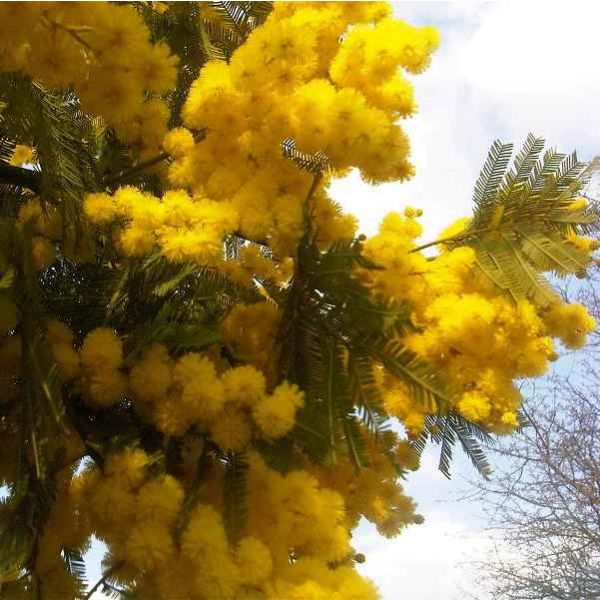Mimosa Scabrella Seeds (Mimosa Bracatinga Seeds)
Mimosa Scabrella Seeds (Mimosa Bracatinga Seeds)
Mimosa Scabrella or Shame tree is a small tree regarded as a useful living fence post or ornamental avenue tree.
Availability: Out of stock
SKU
Mimosa Scabrella
Mimosa Scabrella, also called Mimosa Bracatinga or Sensitive Plant is a member of the Mimosoideae subfamily of legumes. This plant is native to the cool subtropical plateaus of Southeastern Brazil.
Mimosa Scabrella or Shame tree is a small tree regarded as a useful living fence post or ornamental avenue tree. It is also useful for reforestation and as a bonus it sheds copious leaves forming good humus. This is a fast growing tree that can attain 15 m tall in 3 years, 8?9 m in 2 years, and 5 m in 14 months, with sparse broad crown.
The whitish, almost smooth trunk branches shortly above the base and the young branchlets are lepidote (scaly). The leaves are pinnate, compound and small, with axis 3-11 cm long and 3-9 pairs of pinnae, 2-7 cm long, larger on vigorous twigs. The leaflets are made of 15-35 pairs on each side of the axis, narrowly oblong, tiny, 2-5 mm long, blunt, densely covered with fine, star-shaped hairs, with the upper surface yellow-green, paler underneath.
This plant has charming little flowers that bloom in little purple puffs. Produces flower clusters on short racemes, 1-3 at leaf bases or several along short axis, consisting of heads or balls, rounded or elliptical, 7-10 mm in diameter. There are many flowers, and they are small, whitish, 5-7 mm long, composed or tubular, hairless with a 1 mm long calyx, united into a tube near the base, and the pistil have narrow ovary and slender style.
There are several pods in a cluster and they are narrowly oblong, flattened, 2-4 together, 5-9 mm long, covered with tiny warts, and they separate into 2-4 joints or segments, containing 4-angled and 1-seeded, each splitting open later on. There are only a few seeds, and they are beanlike, egg-shaped, flattened, 3-6 mm long, and brown.
Hardiness Zones :
9-11 (-5c/25f, 4c/40f). The Mimosa Scabrella prefers free-draining soil. It tolerates strongly acid soils with pH as low as 4.8 and those with high aluminum content but it does not tolerate waterlogged, compacted or severely degraded soils.
| Common name | Mimosa Bracatinga |
|---|---|
| Species | Mimosa scabrella |
| Germination | To obtain rapid and uniform germination, scarify the Mimosa Scabrella seeds by pouring boiling water over them and stirring gently for 3 minutes. The seeds can then be soaked in tap water for 24-48 hours to accelerate germination. Then, sow the seeds on the surface of a well drained seed sowing mix at about 22øC, under good light. The seeds will usually germinate in 21-30 days. Place the seedlings in standard potting mix at 64-75øF when they reach 15-20 cm in height. Grow them outside in full light and shade them from the hot sun. Water the plants moderately and feed them once a month with regular fertilizer. Germination can take longer. Be patient! Direct seeding is also possible in the spring. The young seedlings should be kept in a semi-shaded location until they are well established. |
| Price View | Price Range |

